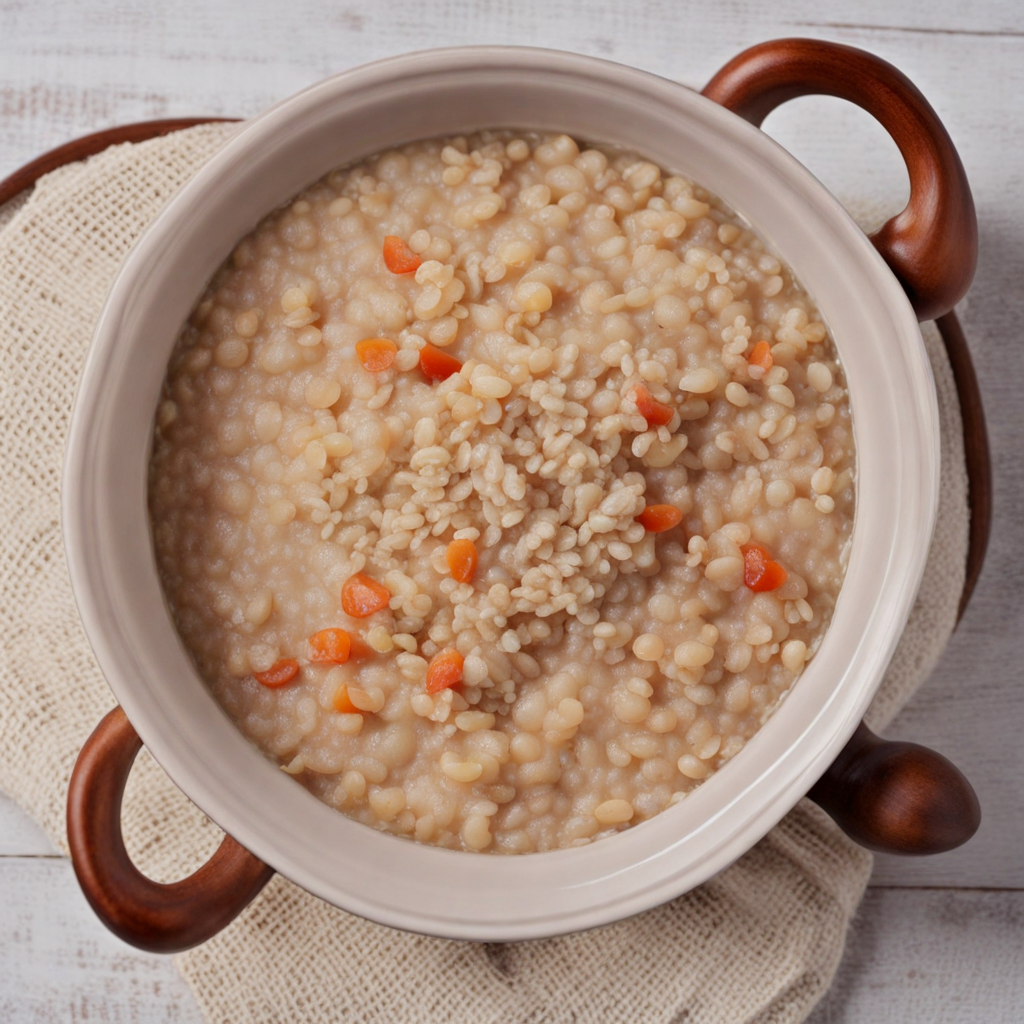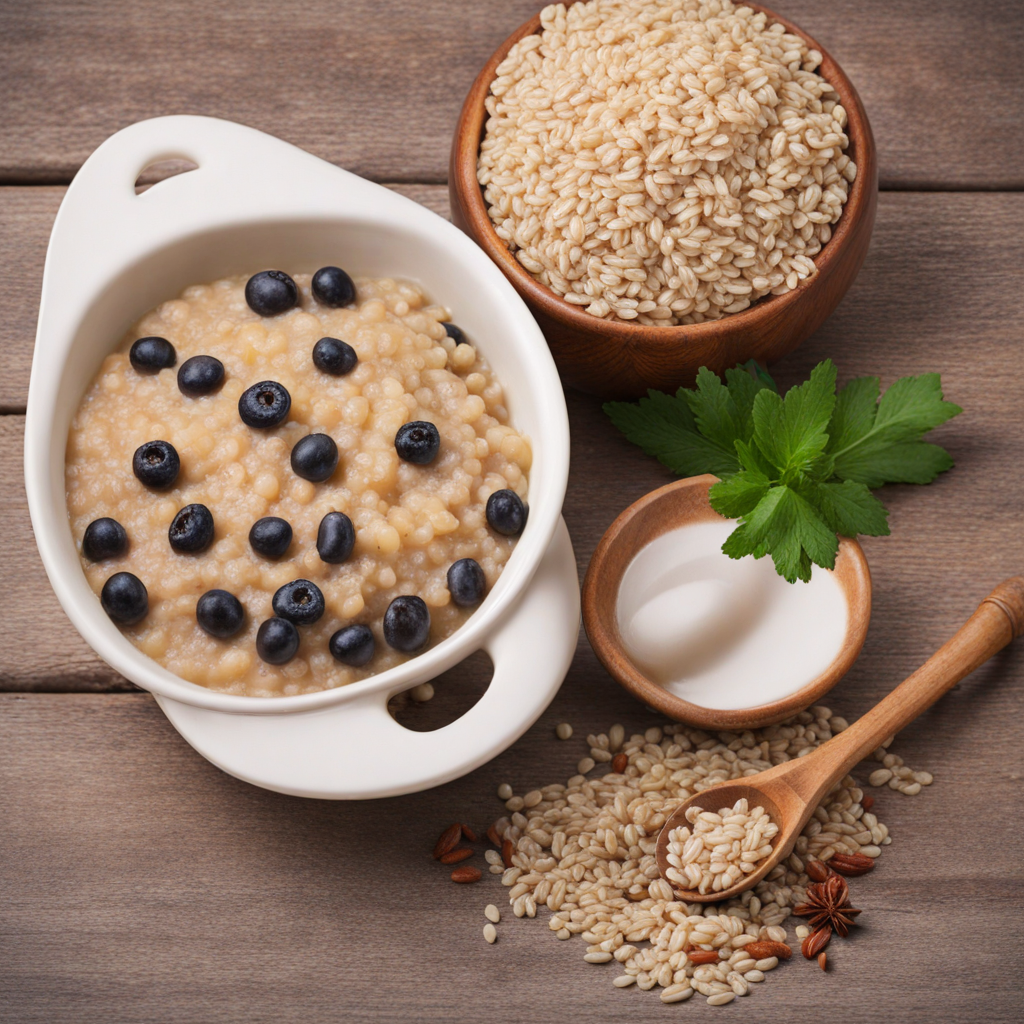Kasha
Kasha, a beloved staple in Ukrainian cuisine, is a dish made primarily from buckwheat groats, which are small, triangular seeds packed with nutrients. This hearty grain has a nutty flavor and a slightly chewy texture, making it an excellent canvas for various culinary creations. Traditionally, kasha is cooked in water or broth, allowing it to absorb flavors that enhance its natural taste. The dish is often served as a side or base for meats, vegetables, and sauces, showcasing its versatility and ability to complement a range of ingredients. In Ukraine, kasha is often enjoyed in its simplest form, seasoned with salt and butter, or topped with sautéed onions, mushrooms, or fresh herbs. However, it can also be transformed into more elaborate meals. For instance, kasha can be incorporated into stuffed dishes, such as cabbage rolls or pierogi, where it acts as a filling that adds texture and depth. Additionally, sweet variations of kasha may include ingredients like fruit, honey, or nuts, providing a delightful balance of flavors for breakfast or dessert. This wholesome dish not only offers a unique taste experience but also embodies the essence of Ukrainian comfort food. Whether enjoyed in a rustic family setting or at a festive gathering, kasha represents warmth and nourishment. Its rich history and cultural significance make it a dish worth exploring for anyone seeking to broaden their culinary horizons and discover the delightful flavors of Ukrainian cuisine.
How It Became This Dish
The History of Каша: A Culinary Staple of Ukraine #### Origins of Каша Каша, a term that broadly encompasses various types of porridge in Ukrainian cuisine, has roots that trace back to ancient Slavic traditions. The word itself is derived from the Old Slavic "kasha," which means “porridge,” and it is believed to have originated from an even older Proto-Slavic word. The earliest forms of каша were likely made from grains such as millet, barley, or oats, cooked with water or milk. This simple preparation reflects the agrarian lifestyle of early Slavic communities, who relied on local grains as staple foods. The earliest records of каша date back to the 9th century, when the East Slavs settled in what is now Ukraine. As agriculture developed, so did the variety of grains used in making каша. Wheat was introduced through trade and cultural exchange, particularly with the Byzantine Empire, leading to a broader array of recipes and flavor profiles. The introduction of buckwheat, a staple in Ukrainian cooking, further diversified the types of каша available. #### Cultural Significance Каша has long been more than just a food item in Ukraine; it symbolizes nourishment, comfort, and tradition. Historically, it was an essential part of the diet for both the peasant class and nobility, serving as a versatile dish that could be dressed up or down depending on the occasion. It was not only a staple during everyday meals but also featured prominently in religious and cultural rituals. For instance, during Orthodox Christian celebrations, каша often played a role in the traditional feast known as "Вечеря" (Vecherya), the dinner preceding significant holidays like Easter or Christmas. In these contexts, it was commonly prepared with butter, honey, or fruits, elevating its status from a simple dish to a festive delicacy. In addition to its culinary appeal, каша embodies communal values. Preparing and sharing каша is often a family affair, bringing generations together. In rural settings, large pots of каша would be prepared for communal gatherings, reflecting a sense of unity and togetherness. #### Development Over Time As Ukraine evolved through various periods of political and social change, so too did каша. During the Kievan Rus' period, from the 9th to the 13th centuries, каша became increasingly popular, and its preparation methods were documented in chronicles. Recipes began to be adapted according to regional preferences and available ingredients. For example, in the Carpathian Mountains, kasha made from buckwheat became a staple due to the region's agricultural focus. The Mongol invasion in the 13th century disrupted agricultural practices, leading to a decline in some forms of каша. However, as stability returned in the following centuries, the dish was revitalized. The Cossack period (16th to 18th centuries) saw каша gain further prominence as a symbol of endurance and simplicity, reflecting the spirit of the Cossacks who often faced harsh conditions. During the 19th century, as Ukraine began to experience industrialization and urbanization, каша adapted once more. Urban dwellers sought quick and convenient meals, leading to the development of instant or pre-packaged varieties. Despite these changes, traditional methods and recipes persisted, particularly in rural areas where food was still prepared using age-old techniques. #### Regional Varieties of Каша One of the most fascinating aspects of каша is its regional diversity. Each area of Ukraine has developed its own unique recipes and styles, reflecting local agricultural practices and cultural influences. 1. Buckwheat Kasha (Гречана каша): Often considered the most iconic type of каша in Ukraine, this dish is made from roasted buckwheat and is typically served with butter, mushrooms, or meat. Buckwheat has been cultivated in Ukraine for centuries, and its nutty flavor and nutritional benefits make it a beloved staple. 2. Millet Kasha (Пшоно): Made from millet, this kasha is often cooked with milk and sweetened with honey or fruits. It is particularly popular in the central and western regions of Ukraine, where millet is traditionally grown. 3. Barley Kasha (Ячна каша): This kasha is made from pearl barley and is known for its chewy texture. It is often paired with stews or served as a side dish during festive occasions. 4. Rice Kasha (Рисова каша): Introduced later, rice kasha is a favorite in many urban households. It is typically cooked with milk and sugar, resembling a sweet dessert rather than a savory dish. 5. Cornmeal Kasha (Кукурудзяна каша): Particularly in the western regions, cornmeal is used to make a thick, hearty kasha, often served with cheese or sour cream. #### Каша in Modern Ukraine In contemporary Ukraine, каша remains a staple food, celebrated for its nutritional value and versatility. With a resurgence of interest in traditional foods and farm-to-table practices, many Ukrainians are returning to the roots of their culinary heritage. Restaurants across Ukraine now feature каша on their menus, often reimagined in creative and gourmet ways. Chefs are experimenting with flavors, incorporating modern techniques while honoring traditional recipes. This blend of old and new has helped to elevate каша from a simple peasant dish to an emblem of Ukrainian cuisine. Moreover, in the context of globalization, каша has found its way into international culinary dialogues. Food enthusiasts worldwide are discovering the health benefits of whole grains, leading to a renewed appreciation for dishes like каша. As Ukrainian culture continues to gain visibility on the global stage, каша serves as a delicious reminder of the country’s rich culinary heritage. #### Conclusion Каша is far more than a mere dish; it is a testament to Ukraine's agricultural history, cultural resilience, and communal spirit. From its ancient origins to its place in modern cuisine, каша has evolved while retaining its significance as a symbol of nourishment and tradition. As we savor a bowl of каша, we are not just tasting a meal; we are partaking in a narrative that spans centuries, connecting us to the land, its people, and their enduring legacy.
You may like
Discover local flavors from Ukraine







